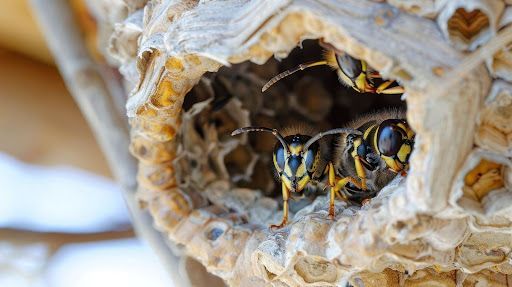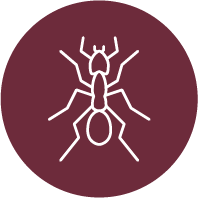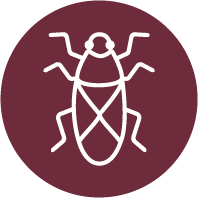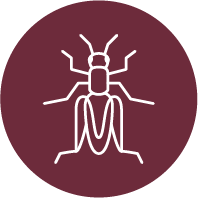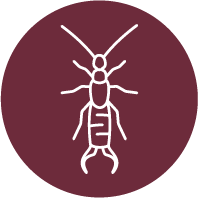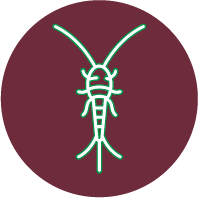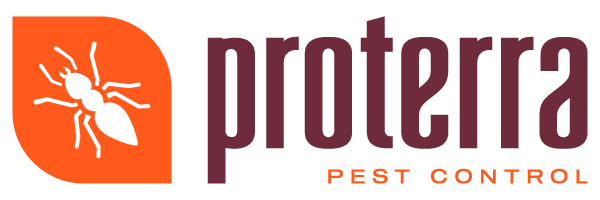Mastering Pest Identification and Control in the Tri-Cities
In the bustling Tri-Cities region, residents and businesses alike face the persistent challenge of managing pests. Understanding the pests that inhabit the area and how to effectively control them is paramount for maintaining a comfortable and hygienic environment. With an array of common pests ranging from rodents to insects, mastering pest identification and control becomes essential for homeowners, businesses, and local authorities alike. By recognizing the signs of infestation and implementing appropriate control measures, individuals can safeguard their properties and mitigate the potential risks posed by these unwanted intruders.
Overview of Common Household Pests in the Tri-Cities Area
The Tri-Cities area, composed of Kennewick, Pasco, and Richland in Washington, is known for its unique geographical and climatic conditions. Nestled at the confluence of the Yakima, Snake, and Columbia rivers, this region enjoys a semi-arid climate characterized by hot summers and cold, brief winters. While these conditions contribute to the area's thriving wine industry and outdoor activities, they also create a conducive environment for various pests to thrive.
Homeowners residing in the Tri-Cities need to be vigilant about pests that can intrude into their lives, causing damage and discomfort. The list of pests commonly found in residential areas here is extensive, covering insects, arachnids, and rodents that are not just a nuisance but sometimes pose health risks as well. Among these invaders, some of the most frequently encountered include ants, spiders, wasps, mice, and even larger mammals such as raccoons.
Ants, for instance, are particularly prevalent during the warmer months. The search for food and water leads them into homes, where they can quickly become a persistent issue. Similarly, spiders of various species find the nooks and crannies of homes perfect for setting up their webs, while wasps might choose loft spaces or garden sheds for nest building, creating hazards, especially for individuals with allergies.
The colder months can drive rodents like mice and rats to seek shelter and warmth indoors. Not only can these rodents cause structural damage by gnawing through wires and insulation, but they also pose significant health risks by contaminating food sources and spreading diseases. Larger mammals such as raccoons, while less common, can invade homes in search of food, leading to complex infestation scenarios.
Understanding the variety of pests prevalent in the Tri-Cities area is the first step toward effective prevention and management. These pests vary significantly in their habits, preferences, and the risks they pose, making it crucial for homeowners to correctly identify them before attempting control measures. Accurate identification ensures that the chosen pest control methods are effective, thereby protecting the home environment from damage and the inhabitants from health risks associated with pests.
Pest Identification Quiz Introduction
Welcome to our interactive quiz, designed to test and improve your ability to identify common pests found in Tri-Cities homes. Through a series of detailed descriptions, images, and questions, you will learn to distinguish various pests, understand their habits, and recognize signs of their presence. This knowledge is not just academic; it's a crucial step in implementing effective pest control measures. Correct identification ensures that you can choose the most appropriate and effective method to deal with these unwelcome guests.
Quiz Section: Identify the Pest
Let’s start with our quiz. You'll be guided through a series of images and descriptions covering a range of pests, from ants and termites to spiders and rodents. Each comes with unique features and behaviors that set them apart. For instance, did you know that termite damage appears vastly different from the gnawing marks left by rodents? By learning these nuances, you will be equipped to identify pests accurately at the first sign of an intrusion.
Question 1: Which pest is notorious for leaving behind a trail of sawdust-like material, often found near windows or wooden furniture?
- A. Ants - B. Termites - C. Spiders - D. Rodents
As you consider your answer, remember, that each pest has distinct characteristics and signs. Moving through the quiz, you’ll become familiar with such details, enhancing your ability to spot these pests in your own home.
Understanding Signs of Infestation
Identifying a pest is only part of the solution; recognizing the early signs of an infestation is equally important. For ants, a trail leading to food sources can be an early indicator. For rodents, look for droppings near food areas or sounds of activity within walls at night. Spiders, though often solitary, can become visible through their webs in corners or undisturbed areas of the house. Termites, on the other hand, might leave behind damaged wood, mud tubes along foundations, or swarmers signaling a mature colony nearby.
Recognizing these signs not only
helps in early identification but also in taking timely action to prevent larger infestations. For instance, spotting a few ants may not seem alarming, but it could indicate a larger colony hidden away. Similarly, finding wasp nests early can prevent potential encounters or stings. Through this quiz and guide, you’re set to learn valuable information on pest identification and the initial steps needed to keep your home pest-free.
Integrated Pest Management Solutions from Proterra Pest Control
Identifying the pests accurately is a significant step, but managing and eradicating them from your home requires professional expertise and sustainable methods. Proterra Pest Control takes a holistic approach through Integrated Pest Management (IPM). This eco-friendly strategy focuses on comprehensive solutions that go beyond mere extermination, combining biological, cultural, mechanical, and chemical tools to minimize harm to humans, property, and the environment. IPM aims to identify the root causes of pest infestations, employing preventive measures and using pesticides as a last resort, ensuring a long-term solution tailored to your specific situation.
What To Do If You Spot These Pests
Upon identifying a pest in your home, your first instinct may be to deal with it immediately. While proactive measures are essential, it's critical to ensure that your approach is effective and safe.
Isolate the area
If possible, contain the pest or its sign (like a rodent dropping or a patch of damage from termites) to prevent further spread.
Identify the pest
Utilize resources, like our quiz, to correctly identify the pest. Accurate identification is crucial for determining the appropriate response.
Contact professionals
For problematic pests, or if an infestation is suspected, it's wise to contact professional pest control services like Proterra. They can provide a comprehensive evaluation and tailor a treatment plan.
Early intervention and professional assistance can make all the difference in effectively managing a pest problem.
Preventive Measures to Keep Pests at Bay
Maintaining a pest-free home is not only about addressing active infestations but also about preventative practices.
Regular maintenance
Fix leaks, seepages, and cracks in your home's structure to eliminate potential pest entry points and breeding grounds.
Cleanliness
Keep living areas and kitchen spaces clean and free from food debris that could attract pests.
Proper storage
Store food, especially grains and pet food, in sealed containers to avoid attracting rodents and insects.
Routine inspections
Engage Proterra Pest Control for regular inspections to catch early signs of potential pest activities, preventing full-scale infestations.
Integrating these practices into your regular home maintenance routine can significantly reduce the likelihood of pest invasions. Proterra Pest Control's routine inspection and treatment services are designed to target potential pest issues before they become problematic, ensuring your home remains a safe and comfortable environment for you and your family.
Whether you're dealing with an existing infestation or aiming to prevent future ones, understanding the pests, identifying signs of their presence, and implementing integrated pest management solutions are key components. With the right knowledge and professional support from services like Proterra Pest Control, homeowners can protect their homes from the myriad of pests lurking in the Tri-Cities area.
Ready to safeguard your home against pests? Proterra Pest Control offers eco-friendly, effective pest management solutions tailored to your needs.
